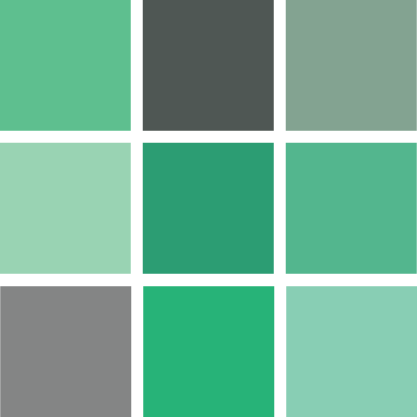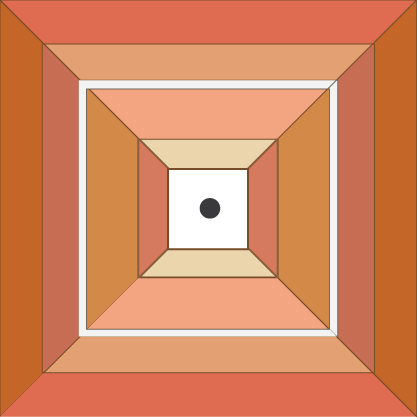All works (fall 2015 - spring 2016)
CalDay is an annual event where UC Berkeley welcomes prospective students to come get a taste of our campus culture and check out what clubs and activities we offer. Student organizations host booths where visitors can get a glimpse of student life outside of classes. The Marketing Team wanted to design postcards to give out to students who came to Innovative Design's booth, so they had something memorable and fun to take home with them afterwards.
My contribution was to design a scavenger hunt postcard. The idea was to create something that would enhance the visiting experience by giving students an excuse to explore and scrutinize the campus grounds. Accordingly, the postcard features eight different patterns which occur regularly throughout the typical student's daily life. This ranges from the complex, weaved windows of the East Asian Library, to the sun patterns dotting the sides of the coffee cups many of us bought each day. The solutions were printed on the back.

Sutardja Dai Hall (SDJ) is one of the newer (and more modern-looking) buildings on the engineering side of campus. It hosts CITRIS, the Banatao Institute, and many entrepreneurship-focused courses. This was the first building I felt at home in as a freshman. This distinctive blue wall makes up one part of Qualcomm Cafe, which is nestled within SDJ. The also has another distinctive area, which is an eye-piercing shade of orange.

Soda Hall is where the Computer Science department lives, and where everyone takes their first CS lab course. Its symbolic nature within CS student culture made it a must to include.

Pimentel Hall is part of the Department of Chemistry. It has often been compared to a round, pink birthday cake and is known for having a revolving stage that professors and TAs enjoy for its ability to inject a bit of dramatic flair into the occasional lecture.

Jacobs Hall (known formally as Jacobs School for Design Innovation) opened my junior year and houses one of the most accessible and well-maintained makerspaces on campus. I wanted to include it because it made such an impact on my college experience and the design community as a whole. Outside the Hall are these lovely wooden tables where students sometimes gather to work on sunny days. They're pleasantly clean and smooth to the touch.

The Campanile is a hallmark of UC Berkeley and practically our school mascot. I wanted to recreate its stone structure without having to resort to a drab collection of grays, and so took the creative liberty of superimposing a blueish hue on top of everything.

C. V. Starr East Asian Library, known colloquially as just the "East Asian Library," is one of the newer libraries on campus and was one of my favorite places to study due to its Asian-inspired architecture, excessive use of exposed wood, very particular purple desklamps, and the shelf of Studio Ghibli storyboards on the third floor. It looks glorious illuminated at night.

Qualcomm Cafe is a popular student hub (as mentioned above) nestled within Sutardja Dai Hall. It is a wrap station combined with a Peet's Coffee, which often serves cups with this distinctive sun pattern. I remember it fondly as the place where I bought a mocha for the first time, as well as the only campus cafe I deemed worth of my meal points.

Bechtel Engineering Library is the library located at the start of where the engineering buildings begin on campus. It is located about a three-minute walk from Qualcomm Cafe and is a popular meeting spot for group projects. As you walk from the CS sector of campus, past Qualcomm and towards Bechtel, you come across a set of stairs framing a picture-perfect view of the Campanile. I've sprinted down these steps in a desperate bid to catch a lecture across campus, ambled down them with friends on the way to ShareTea, leant against the black metal railings while chatting with friends. It's these memories that made me want to put a piece of the steps in the postcard, which, rather than summing up the quntissential student experience, has probably ended up a pretty good blueprint of where I spent most of my time the four years I was there.
